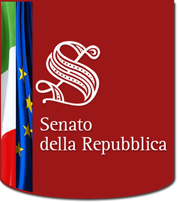Glossary

C
Control
It is a dimension of parliamentary oversight implemented through public debates, parliamentary reports and the use of the media. Its main aim is to grant transparency of governmental action vis-à-vis public opinion. It is based on a combination of both formal and informal parliamentary prerogatives in the field of information and communication.
For further details, see: Parliamentary oversight
Cost-benefit analysis
The cost-benefit analysis (CBA) is a method used to compare alternative public intervention options. It is normally carried out before the intervention (ex ante) to decide whether the intervention should be financed, but can also be carried out ex post, as an evaluation tool. The CBA compares the social benefits and costs of each alternative. An intervention is judged to be desirable if, overall, the benefits exceed the costs. The option to intervene is therefore implicitly compared with the alternative of leaving the current situation unchanged (status quo or "option zero"). If there are several intervention options, the one with more benefits than costs is deemed to be preferable. In the CBA, after defining the scope of analysis (geographical context, intended beneficiaries and timeframe), the relevant costs and benefits are identified. The amount is estimated and expressed in monetary units (monetisation) with a view to facilitating comparison. The CBA is not therefore suitable for use with non-monetisable values. In such cases, to make the comparisons, the cost quantification should be crossed with an estimate of the results of the intervention, as happens in the cost-effectiveness analysis (CEA) (see intra).
Sources:
- Momigliano S. and Giovanetti Nuti F. (ed.), La valutazione dei costi e dei benefici nell'analisi d'impatto della regolazione, Soveria Mannelli 2001, pp. 36-46;
- World Bank, Impact Evaluation in Practice, Washington 2011, p. 230.
Cost-effectiveness analysis
Cost-effectiveness analysis (CEA) makes it possible to compare alternative policies on the basis of their costs and effectiveness. Since costs (monetised) and results (not monetisable, such as the number of human lives saved by a given prevention policy in the health sector) are being compared, it is not possible in the CEA to calculate the balance between the monetary value of the costs and the benefits, as happens in the CBA (see intra). Cost-effectiveness indices (such as the average cost per unit of result, or the result per unit of cost) must be constructed, through which the different policies can be compared.
Source:
- Momigliano S. and Giovanetti Nuti F. (ed.), La valutazione dei costi e dei benefici nell'analisi d'impatto della regolazione, Soveria Mannelli 2001, p. 47 et seq.;
- World Bank, Impact Evaluation in Practice, Washington 2011, pp 11-12 and 230.
Counterfactual
Counterfactual refers to the value that the result variable would have had if the public policy in question had not been adopted and implemented. Precisely because it refers to a situation that did not occur, the counterfactual cannot be observed.





